Comprehensive interpretation of low-temperature heating technology of solar street light lithium-ion battery
By:Shujie Wu (first author) and Hailong Li (corresponding author) of Beijing Institute of TechnologyTemperature has an important effect on lithium-ion batteries. Too low temperature will not only cause degradation of lithium-ion battery performance and failure to work normally, charging at low temperatures will also cause the occurrence of lithium precipitation in the negative electrode, causing a rapid decline in battery capacity, in extreme cases It may even cause a short circuit between the positive and negative poles. Therefore, in order to allow the lithium-ion battery to work normally at a lower temperature, it is necessary to equip the lithium-ion battery with a heating device to increase the temperature of the lithium-ion battery.

1.2.3 Electrothemal jacket
The Electrothemal jacket was first proposed by Chery Automobile. The method is to use a thermal resistance to make a protective jacket around the battery, and monitor the temperature change of the battery pack through the BMS system of the battery pack to control the preheating of the battery. This method can preheat the battery pack to working temperature within 10 minutes and maintain good temperature uniformity
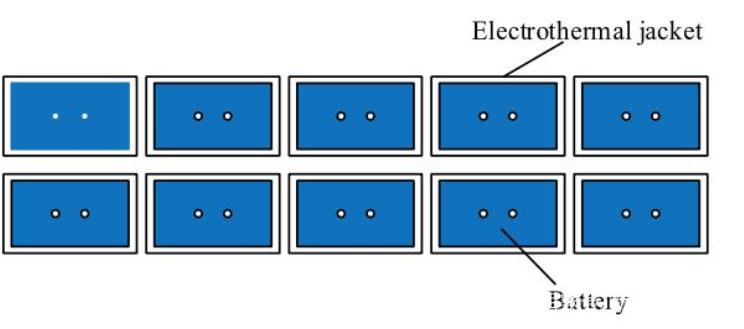
1.2.4 Electrothemal film
The Electrothemal film is generally made of a composite of metal foil and insulating material, and it is pasted on the surface of the battery during use. The advantage of this heating method is that the heating film is relatively thin (1-2mm), so it takes up less battery space. Compared with the preheating method of electric heating film using positive temperature coefficient materials, this method can achieve a higher heating rate with lower energy consumption
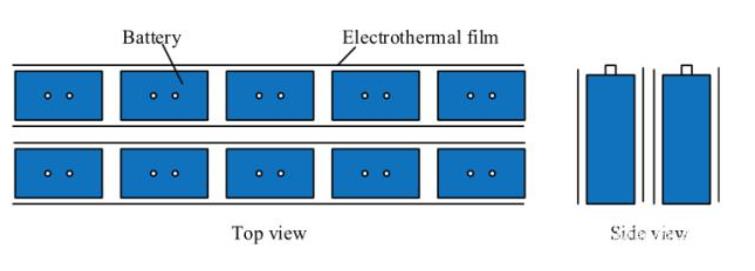
2. Internal heating
Compared with external heating, internal heating has a faster heating rate and a higher heating rate. Therefore, the internal heating method for preheating lithium-ion batteries has also received extensive attention, but the control mechanism of internal heating is relatively complicated, and Some internal heating methods still have certain safety hazards. Internal heating methods can be divided into two categories: self-heating and current excitation. The following table shows some common internal heating methods.
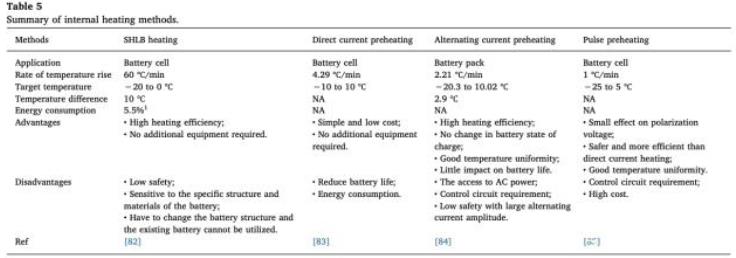
2.1 Self-heating method
It can be seen from the above table that the self-heating method has an absolute advantage in the heating speed. This method is to put a Ni foil inside the battery, and then lead out the poles outside the battery, and control the heating of the battery through an external circuit. Experiments show that this method can reach a heating rate of 60°C/min when heating the battery from -30°C to 0°C, and this process consumes only 5.5% of energy.
In order to reduce the temperature gradient inside the battery during the heating process, multiple pieces of Ni foil can be added inside the battery for heating. Studies have shown that adding two pieces of Ni foil inside the battery can increase the battery's heating rate from -20°C to 0°C to 96°C /min, the energy consumption is only 2.9%, while the heating rate of a single Ni chip can only reach 60°C/min under the same conditions, and it needs to consume 4.1% of electric energy. It can be seen that the method of multiple Ni plates can not only effectively reduce the temperature gradient inside the battery, but also can effectively increase the heating speed of the battery
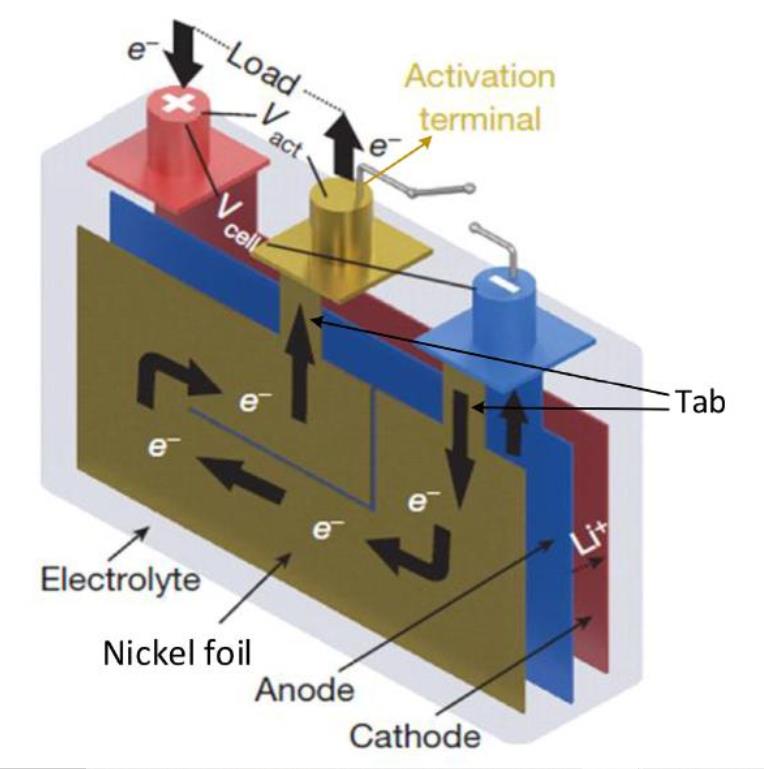
2.2.2 AC preheating method
The alternating current heating method is to apply an alternating current at both ends of the battery, and use the internal impedance of the lithium-ion battery to heat the battery. Since the direction of the alternating current is always changing rapidly, it avoids the degradation of the battery capacity caused by the high-current discharge and heating process of the direct current. At the same time, compared to the direct current heating method, the AC heating speed is faster and the efficiency is higher. Studies have shown that by increasing the AC current and reducing the frequency, the efficiency of AC heating can be effectively improved
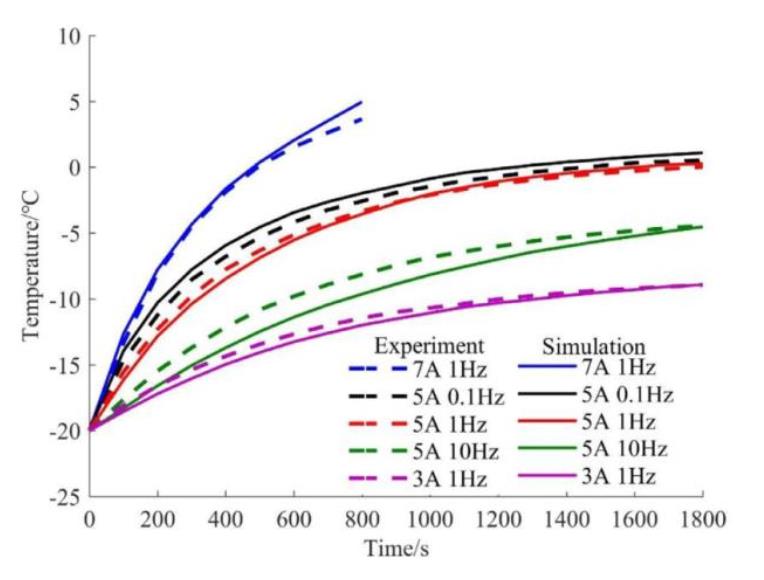
2.2.2 Pulse current preheating method
The pulse current preheating method is to realize the preheating of the lithium ion battery through the heat generated by the ohmic resistance inside the lithium ion battery through the discontinuous high current discharge method. Compared with the air preheating method, the pulse discharge preheating method can achieve a more uniform temperature distribution inside the battery (the temperature gradient is less than 2°C), thereby effectively reducing the capacity degradation caused by the internal temperature gradient of the battery, but Using this method to preheat the battery requires adding a discharge circuit in the battery pack, which leads to an increase in battery cost. Therefore, this preheating method is still at the laboratory stage and has not yet been commercialized
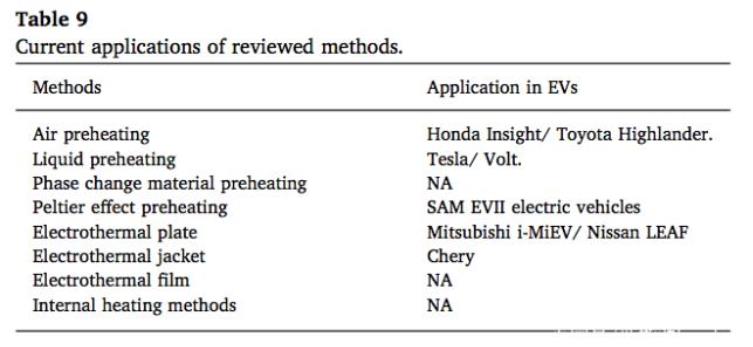
The air preheating and liquid preheating methods have been used in battery heating due to their simple structure. The air preheating method is only used in some early low thermal conductivity due to its lower thermal conductivity and higher space requirements. For batteries with energy density, the liquid preheating method has been more and more widely used because of its higher efficiency in the application of electric vehicles. The recently developed internal heating method has attracted wide attention due to its super high heating efficiency.
This article mainly refers to the following documents. The article is only used for the introduction and comment of related scientific works, as well as classroom teaching and scientific research, and shall not be used for commercial purposes. If you have any copyright issues, please feel free to contact us.
The state of the art on preheating lithium-ion batteries in cold weather, Journal of Energy Storage 27 (2020) 101059, Shujie Wu, Rui Xiong, Hailong Li, Victor Nian, Suxiao Ma
Contact: Leo Liu
Phone: +8613924679791
Tel: +8613924679791
Email: info@gtiled.com
Add: 4F 1A BLDG,NO.91 LIXIN ROAD,LONGGANG DISTRICT,SHENZHEN P.R.,CHINA.